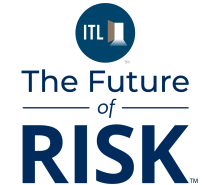For those of us who have worked in this industry for a decade and longer, when you honestly assess how claims handling has evolved, you would fairly conclude that while certain aspects have improved – some even impressively – the fundamental model, process, service and financial outcomes have essentially remained unchanged or marginally improved.
When comparing insurance claim modernization with other financial and consumer services, the shortcomings become even more obvious. Yet the environment in which claims occur and are resolved has changed significantly.
The reasons for this lack of breakthrough are many and complex, and playing catch up in real time has not been easy – but it is possible, and mandatory.
Evolution vs. Transformation
Claims evolved from paper in the 1980s to computerization in the 1990s, followed by mobile technology by the late 1990s and into the new millennium. So-called transformation from legacy, often home-grown, core CMS (claim management systems) to modernized systems was the most recent, costly and arduous of undertakings.
While many large carriers began tackling policy management and CMS upgrades 10 or more years ago, some are now just finishing or making those changes. Carriers find themselves “upgraded” but now need to bridge integration and digitization gaps to fully realize massive system investments often encumbered by budget and technology prioritization fatigue. Disappointment is expressed throughout as gains in system maintenance and ease of modification fall short of high expectations. In other words, transformational change is not yet completed despite time and tremendous capital expenditures.
This is not a vote for turning back, as such legacy system upgrades were overdue by decades.
The core process of claims intake, assignment and the remaining linear claim steps is unchanged throughout the industry. Claims handling is considered part art, part science, difficult to untangle and requiring apprenticeship learning and development that takes years. Litigation risks and fiduciary responsibilities are real but often amplified as barriers to change. Visions of STP (straight-through-processing) have been muted because of loss cost containment priorities, and cloud migration no longer appears to be the next silver bullet, as the landscape is changing.
Interdependency among vendors, providers and other ecosystem friends and foes has grown and become more sophisticated. Many are sizeable, global companies making their own technology investments and are constantly vying for a larger piece of the pie. The reliance on such entities has never been higher when it comes to repairing, restoring and managing a multitude of moving parts in today’s claim response whether individual or catastrophic scenarios. The insurtech wave over the last 10 years has only added to these players that are now posturing with AI in the forefront, regardless of depth and validation.
The stakes are high as premiums become unaffordable and both claim operational productivity and indemnity control are leaned on to offer relief. Either way, the horizon is a next frontier of incomplete digitization, limited integration and a fragmented provider/vendor space while AI is unfolding rapidly.
See also: The Need for Excellence in Claims Handling
Claims Needs More Attention, Respect and Resources
It is counter-intuitive that the claims operation, which consumes the majority of a carrier’s total income, receives the minority of investment in dollars and technology. And much of that is for maintenance, not development. Because claims is (wrongly) perceived as little more than a major cost center, it can be underappreciated in C-suites and in other operating areas. In tough times, it is the first to incur layoffs.
While we often hear about how the claim is “the moment of truth” in insurance, it has until recently been mostly lip service emphasizing indemnification control while requiring intensive people resources to overcome numerous process workarounds. Carriers have recognized that the critical importance of customer retention is heavily tied to claims satisfaction and must rely on people assets to fill various process holes. Yet what is really needed to make true progress is real transformation in philosophy and operating models.
Tinkering vs. Transformation
The industry has embraced numerous third-party information technology solutions, but they have almost all been “point solutions” that address only single functions within the broader end-to-end claim process. True transformation will require a bold, holistic mindset, not just modifications and “band aids.” Integrations, AI and marketplace models are part of the solution. Solution providers have a similar responsibility to help unlock inefficiencies among repair, replacement and restoration following a loss and remain uncoordinated or lack incentives to partner.
True Transformation: Predict and Prevent vs. Respond and Mitigate
Underpinning true claims transformation will be a new paradigm built around a new “predict and prevent” operating model vs. the legacy approach of “respond and mitigate.” Connected sensor and data-enabling technologies and business models are widely available and should be pursued aggressively. This transformation will unlock innovative insurance product models. Increasing cyber, data and climate risks are just a few that call for greater loss detection and avoidance.
The New and Different Automotive, Repair and Consumer Landscape
The insurance industry needs to stop operating in ways that worked in yesterday’s automotive and consumer environment. Driver assistance and electric vehicles have forever changed the auto physical damage and collision repair landscape. Consolidation of the collision repair industry, backed by well-funded private equity investors, has shifted the balance of power between them and auto insurers. Auto manufacturers have begun disrupting the auto insurance and collision repair process through branded insurance and certified repair programs requiring the use of their parts. Consumers are shopping and switching auto insurance at record rates in the face of relentless premium increases. The insurance industry’s image is at an all-time low, including a highly negative view of their claims adjudication practices.
The Silver Tsunami
The insurance claims adjuster workforce has been shrinking and now tops the list of vanishing industry jobs. Several factors are driving this shrinkage, including fewer auto claims, cost cutting, and aging out, all of which is expected to continue. This reality makes it incumbent on carriers to transform the claims process by leveraging technology and implement effective upskilling programs for the surviving workforce.
Too Many Solutions – Too Few Integrations
The insurance information technology landscape is proliferated with numerous startups as well as legacy providers, most of which offer closed, proprietary solutions and only a fraction of which are integrated with carrier claims systems. And almost all of these solutions address only a small subset of the claim process.
Shiny Things Distraction
The insurance industry has suffered from the same irrational attraction to “shiny objects” that consumers display, and the costs have been high. Research, testing, meetings, IT resources, pilots, staff time have all contributed, and unwarranted opportunity costs too frequently result in abandonment. Carriers need to identify their challenges and then review potential solutions rather than the other way around.
New Technology Potential
It is surprising to consider how much new claims technology has been developed, tested and effectively validated by a small number of carriers but has not been more widely explored or adopted by the wider industry. Consolidation and attrition among this segment may be expected and could address this gap in time.
Critical Leadership
Real transformation by large, complex companies is not possible without the clearly articulated encouragement from leadership including CEOs and the rest of the C-suite. These leaders will need to convince their stakeholders of the existential need for transformation and be cheerleaders for the required innovation.
See also: Why Do Insurance Claims Take So Long?
Legislative/Legal Refocus
The insurance industry has historically been quick to point to regulators as impeding their ability to innovate. While sometimes true, this claim is exaggerated, and carriers need to learn how to navigate these challenges. Confronting the threats of legal system abuse, social inflation and consumer dissatisfaction can become a common cause for these constituents.
The time is now, conditions are ripe, the solutions are at hand and the future of the industry awaits.









